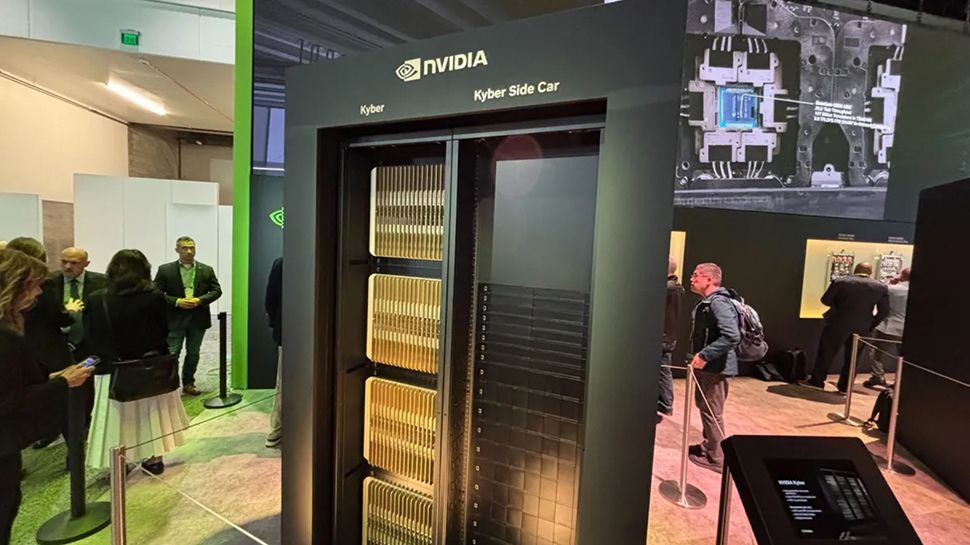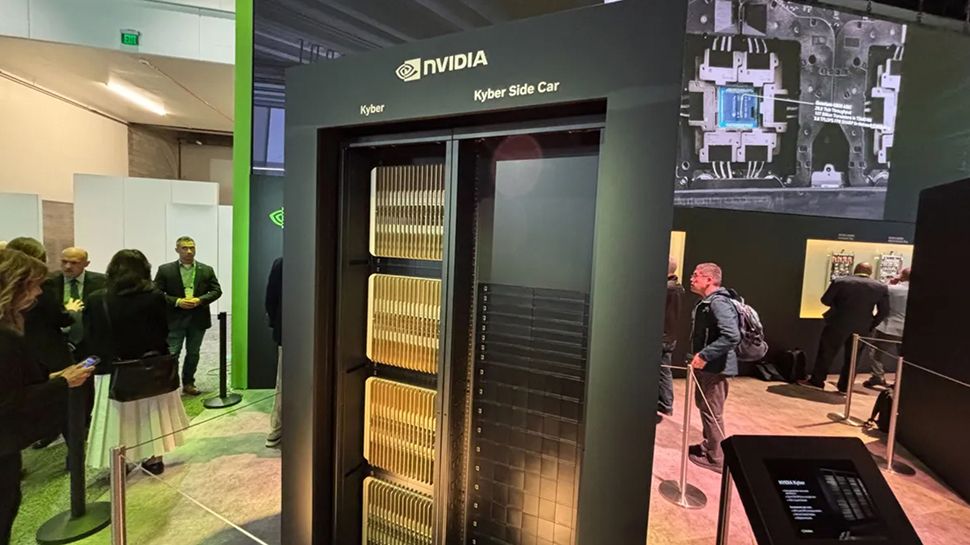
- Rubin Ultra GPUs previewed at Nvidia GTC 2025 with Kyber rack mockups
- Each NVL576 rack may include 576 GPUs across four internal pods
- Projected power draw reaches 600kW with performance targets of 15 EFLOPS
At Nvidia GTC 2025, the company gave a preview of what its future data center hardware could look like, showcasing mockups of its Rubin Ultra GPUs housed in the Kyber-based NVL576 racks.
These systems are expected to launch in the second half of 2027, and while that’s still some way off, Nvidia is already laying the groundwork for what it describes as the next phase of AI infrastructure.
A single NVL576 rack, according to Jensen Huang, co-founder, president, and CEO of Nvidia, could draw up to 600kW. That’s five times more than the 120kW used by current Blackwell B200 racks, suggesting a steep rise in power per rack going forward.
Powering the future
Tom’s Hardware reports, “Each Rubin Ultra rack will consist of four ‘pods,’ each of which will deliver more computational power than an entire Rubin NVL144 rack. Each pod will house 18 blades, and each blade will support up to eight Rubin Ultra GPUs – along with two Vera CPUs, presumably, though that wasn’t explicitly stated. That’s 176 GPUs per pod, and 576 per rack.”
The Kyber rack infrastructure will support these systems, along with upgraded NVLink modules which will have three next-generation NVLink connections each, compared to just two found in existing 1U rack-mount units.
The first Rubin NVL144 systems, launching in 2026, will rely on existing Grace Blackwell infrastructure. Rubin Ultra arrives in 2027 with far more density.
Tom’s Hardware says that the NVL576 racks are planned to deliver “up to 15 EFLOPS of FP4” in 2027, compared to 3.6 EFLOPS from next year’s NVL144 racks.
During the GTC 2025 keynote, Jensen Huang said future racks could eventually require full megawatts of power, meaning 600kW may only be a stepping stone.
As power climbs toward the megawatt range, questions are inevitably growing about how future data centers will be powered.
Nuclear energy is one obvious answer – The likes of Amazon, Meta, and Google are part of a consortium that has pledged to triple nuclear output by 2050 (Microsoft and Oracle are notably missing for the moment) and mobile micro nuclear plants are expected to arrive in the 2030s.
You might also like
Services Marketplace – Listings, Bookings & Reviews
